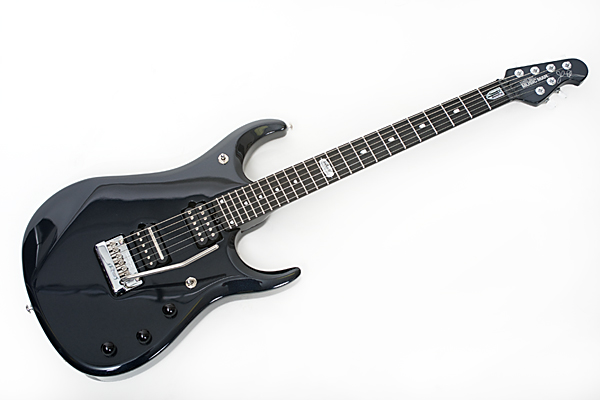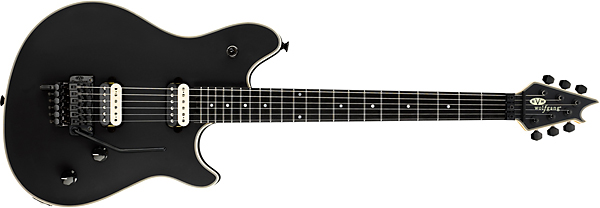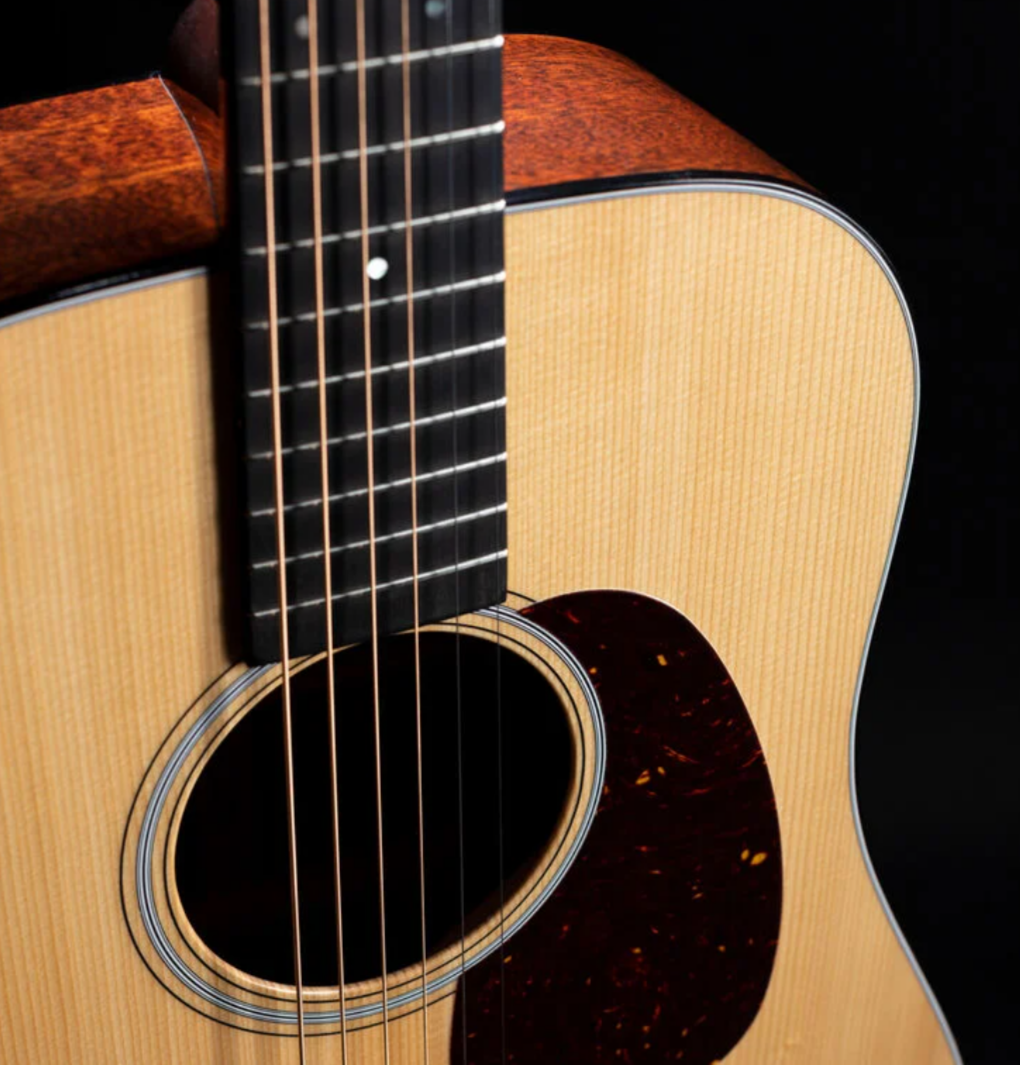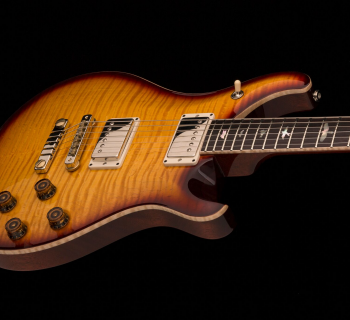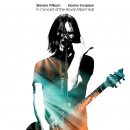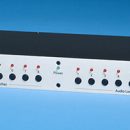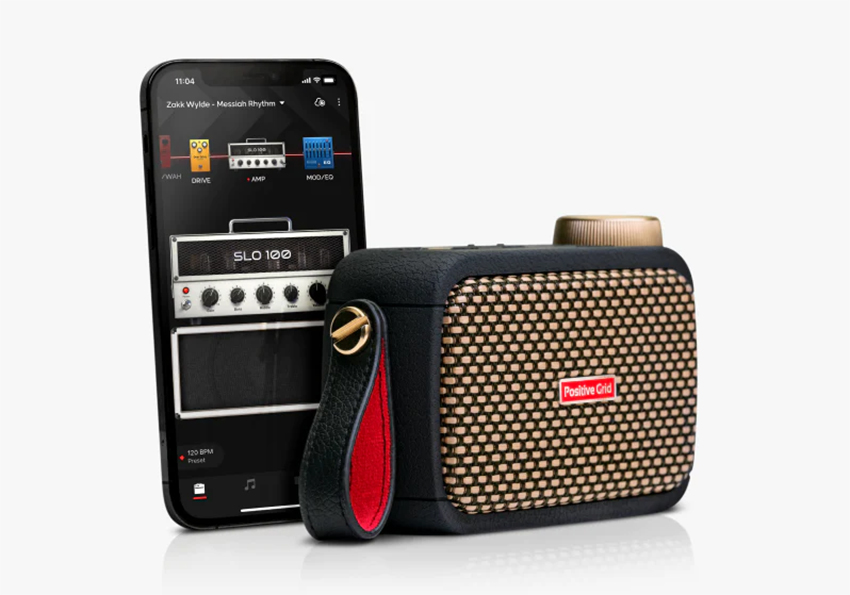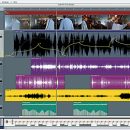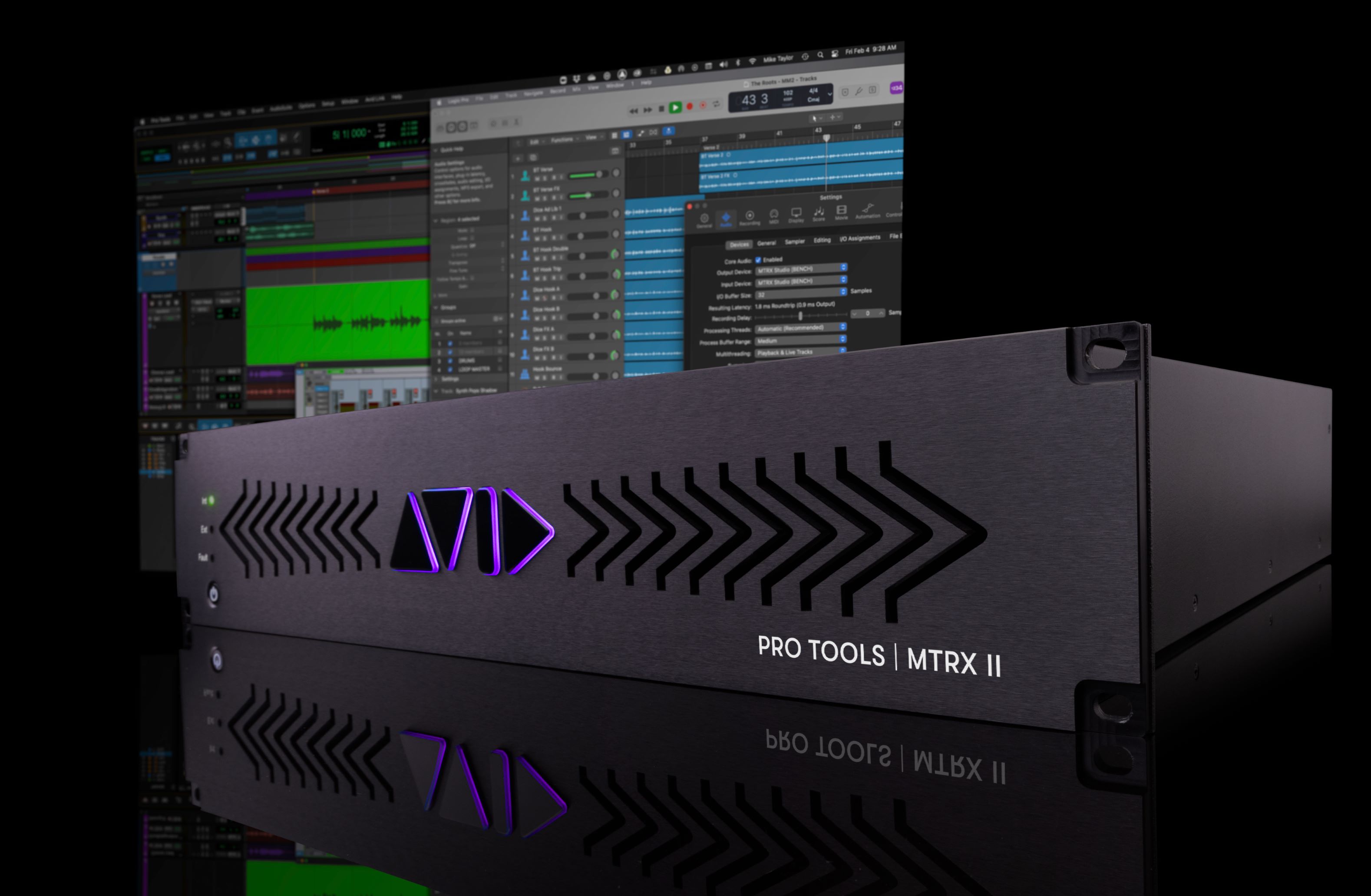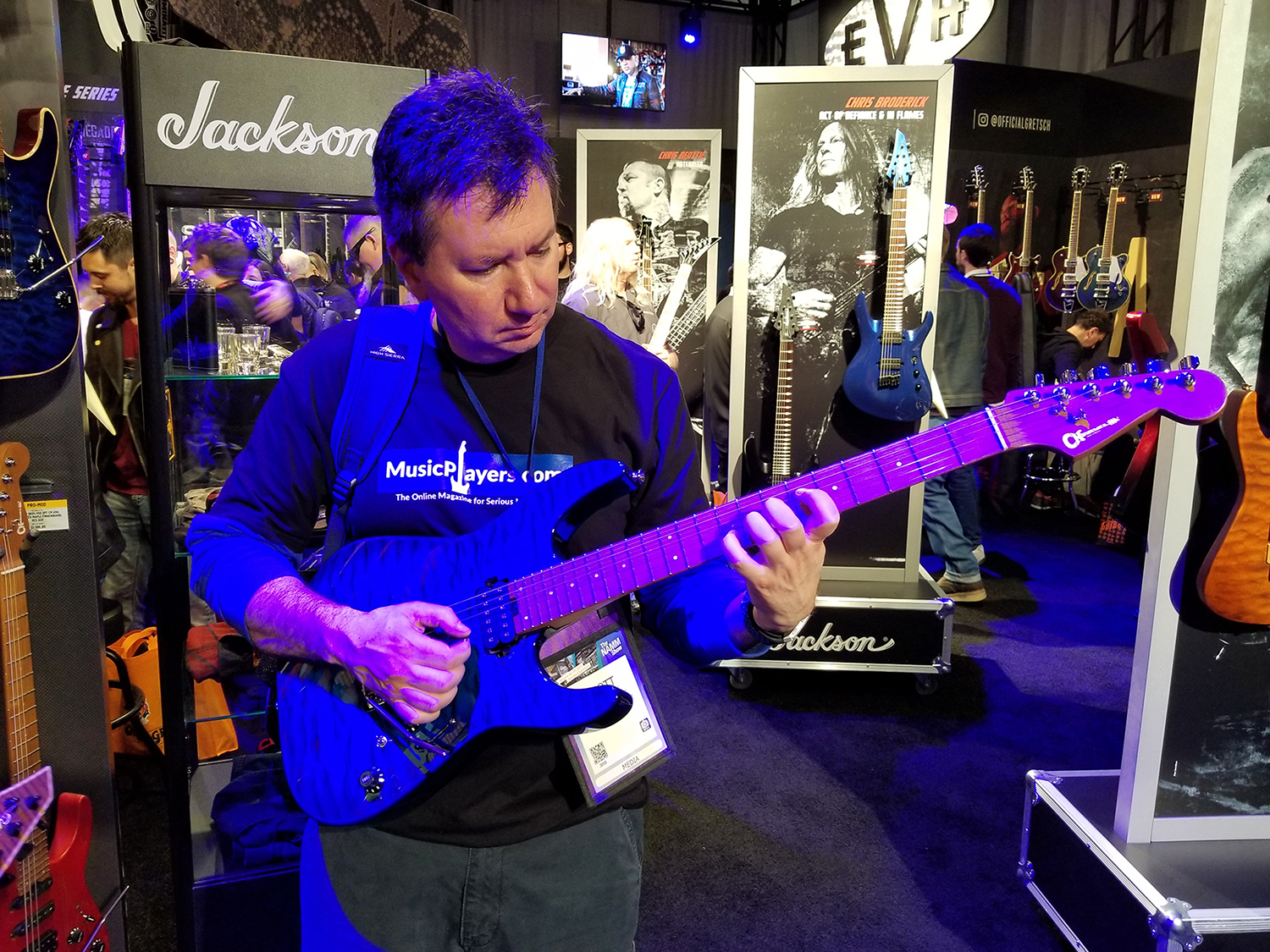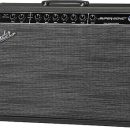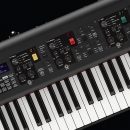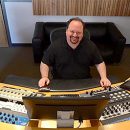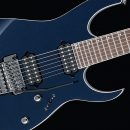 The ENGL Powerball II is the next generation of the German amp maker’s extremely popular high-gain, multi-channel head. Building on the success of its predecessor, the Powerball II refines a product that already sounded fantastic and makes it even better, adding a host of tweaks (some subtle, others significant) that all add up to something really special.
The ENGL Powerball II is the next generation of the German amp maker’s extremely popular high-gain, multi-channel head. Building on the success of its predecessor, the Powerball II refines a product that already sounded fantastic and makes it even better, adding a host of tweaks (some subtle, others significant) that all add up to something really special.
As with other ENGL amps, the Powerball II delivers a diverse range of tones ranging from pristine studio cleans to classic hard rock punch to Euro-metal mayhem and a wide range of blue and alt-rock tones in between. It’s easy to glance at the menacing faceplate and think “Oh, it’s just a metal amp,” but you couldn’t be more wrong. That said, however, if it is metal tones you want, this amp will leave you with a serious case of perma-grin.
| Category | Value | Rating |
| Features | 20% | |
| Usability | 25% | |
| Sound | 25% | |
| Documentation & Support | 10% | |
| Price | 20% | |
| OVERALL RATING = 3.6, which earns it a WIHO Award! 3.6 stars or better: Outstanding, WIHO Award 3 stars or better: Worth considering 2 stars or better: Suited to specific needs 1 star or less: Not recommended |
||
Featuring four completely independent channels, low noise at high gain (in part due to a fantastic internal noise gate), clear note definition through high-gain tones, tight-yet-forgiving response, and a wide range of options for custom tailoring the tone to your precise needs, this is an ideal amp for so many players with diverse musical tastes. If you need to cover a lot of bases with one amp that really does a killer job across the musical spectrum, the Powerball II belongs on your short list of amps to consider.
The Powerball II is a dream for players of hard rock, metal, prog rock, and even pop and alternative rock players in need of versatility. It’s a bit of overkill for the blues player or traditional classic rock guy, but for the rest of us, this is one diverse and gorgeous sounding high-gain amp.
Features
The ENGL Powerball II is a four-channel, 100-Watt, master volume head utilizing four ECC83 (12ax7) preamp tubes and four 6L6GC power tubes. With its black grill, mirrored ENGL logo, and red power tube backlighting, it definitely strikes a menacing pose — this is easily the Darth Vader of guitar amps. But unlike that fearless warlord with a singular vision of universal domination at his master’s bidding, the ENGL Powerball II provides a lot of flexibility when it comes to dialing in your tone.
 Channels Clean, Crunch, Lead 3, and Lead 4 have four independent volume controls but share two voicing sections specifically optimized for cleaner and heavier tones. The Clean and Crunch channels share a three-band EQ (Bass, Mid, Treble), and then Treble-Clean and Treble-Crunch controls enable you to fine-tune the high-end response of the first two channels. Lead 3 and Lead 4 share another three-band EQ as well as a footswitchable Mid Boost/Cut control, but there are subtle voicing differences between the two high-gain channels that further add to the variety of tones the Powerball II is capable of delivering.
Channels Clean, Crunch, Lead 3, and Lead 4 have four independent volume controls but share two voicing sections specifically optimized for cleaner and heavier tones. The Clean and Crunch channels share a three-band EQ (Bass, Mid, Treble), and then Treble-Clean and Treble-Crunch controls enable you to fine-tune the high-end response of the first two channels. Lead 3 and Lead 4 share another three-band EQ as well as a footswitchable Mid Boost/Cut control, but there are subtle voicing differences between the two high-gain channels that further add to the variety of tones the Powerball II is capable of delivering.
Sit down. We’re not finished yet. In typical ENGL fashion, there are additional controls for fine-tuning your tone. The Clean and Crunch channels share Bright and Bottom switches. Bright boosts upper high-end frequencies, while Bottom boosts low-end frequencies. The Lead 3 and Lead 4 channels each have independent Bottom voicing switches. The overall tight response of this amp is due in part to diode-based rectification.
Next comes the Depth Punch control. This knob shapes the power amp response by influencing the range of low frequencies present in the tone. A Presence control influences the high-end frequencies present in your sound, and together, these controls can significantly later the tone and feel of the amp. There is no onboard reverb.
The effects loop can run as either a parallel or series loop, and is hard bypassable.
A noise gate is built into the Powerball II, and a control on the rear of the amp lets you set the threshold at which it kicks in. The gate only applies to the Lead 3 and Lead 4 channels.
A second master volume enables A/B volume switching, useful for a solo boost or bringing levels down for that one intimate song in your set.
Electronic power tube monitoring (P.T.M.) does just what you think: monitors your tubes for problems. If current flowing to a tube exceeds limits, the system shuts off the tube, and an indicator light on the face of the amp identifies the problem tube. Events such as incorrect speaker loads (impedance mismatch), power spikes, or just a faulty tube can trigger these events.
The Powerball II supports a typical array of speaker cabinets wired for 4-, 8-, or 16-ohms.
 With all this flexibility, you need a way to control it all, and ENGL provides a few options. First, you can purchase the optional Z-9 Custom Footswitch, which provides remote control over channel selection plus two additional features of your choosing — either Mid Boot and Volume A/B or FX Loop and Noise Gate.
With all this flexibility, you need a way to control it all, and ENGL provides a few options. First, you can purchase the optional Z-9 Custom Footswitch, which provides remote control over channel selection plus two additional features of your choosing — either Mid Boot and Volume A/B or FX Loop and Noise Gate.
While the Z-9 also doubles as a very simple MIDI foot controller, more useful in that capacity is the optional ENGL Z-11MIDI Switcher, which provides a MIDI interface to control the amp via its final option: a series of ¼” stereo TRS jacks that enable external switching from a wide variety of third-party products. The first jack switches the FX Loop and Noise Gate on and off, the second jack selects between Volume A and Volume B and Mid Boost On/Off, and the third jack selects among the four amp channels.
Key Differences: Powerball vs. Powerball II
Gain Controls: Powerball II has four independent Gain controls. The original Powerball was more of a “pseudo”-four channel head, with one shared Gain control for the first two channels and another for the two Lead channels. The Powerball II has a true four-channel design.
Tone: All four channels have been tweaked to take advantage of the more traditional four-channel design, plus other subtle refinements to the tone.
Mid Boost: This new feature adds a secondary midrange frequency control, switchable, to the Powerball II.
Effects Loop: In the Powerball II, it is bypassable via footswitch.
Noise Gate: In the Powerball II, it is bypassable via footswitch.
Remote Control: The Powerball II has ENGL’s S.A.C. port for remote control via their latest MIDI switcher (Z-11) and Z-9 footswitches.
Usability
German Engineering. Those two words make us think of words like: quality, rugged, sophisticated, precise, powerful, technical. In reference to that last adjective, driving a BMW automobile is similar to operating other cars, yet its sophisticated iDrive system requires some learning before you can extract all the performance from the car that it is capable of. This analogy holds true with the ENGL Powerball II, whose uniquely implemented tone controls take some subtle rethinking to get used to, particularly for players used to having a full complement of tone controls on each channel of their multi-channel amp. Never fear, though. Sound sculpting lives here in fine detail.
Once we grasped the shared EQ controls with separate features for dialing in just the high end of our first two channels, and different controls for tone shaping on the third and fourth channels, it was smooth sailing, and was easy to shape sounds as desired.
The noise gate, with its single threshold control, was a breeze to set up, and it worked incredibly well in a variety of situations. This is a gate purpose-built for a guitar amp, and we never found ourselves wishing for more flexible controls over the release of the gate. Most people who experienced it were stunned by just how well the gate worked.
The effect loop featured a mix control for the Send, and when set to its maximum position, the loop operated at 100% wet (series).
To control the amp, rather than use an ENGL footswitch, we connected our RJM Music Technology Rack Gizmo switching system to the Powerball 2 via a custom cable from RJM that attached the Rack Gizmo to the three switching jacks on the rear of the amplifier. From there, we were able to easily use our Mark L FC-25 MIDI foot controller to perform all channel selection, change volume settings A/B for a solo boost, activate the Mid Boost/Cut feature, enable or bypass the effects loop, and activate the noise gate if desired.
Our only feature request: we would love to have a half-power mode of operation. This amp is one loud monster!
Sound
When you talk about amps that have killer tone, the ENGL Powerball II easily finds a home on that list. This has become one of our favorite high-gain, 6L6-based amps of all time, and multiple editors on our team have nothing but praise for its tone.
ENGL amps have a voice of their own. While there are certain benchmark tones that come from builders in California, and others in England, ENGL easily represents the finest of European high-gain tone. Each channel of the amp is capable of delivering a wide range of tones, and while the Clean and Crunch channels are more or less extensions of each other from a gain perspective with some custom EQ options, Lead 4 is not simply an extension of Lead 3’s tone — there is a subtly different character to its output, which isn’t specifically any heavier than the other channel.
Before talking about some sound specifics, we’ll talk about the character of the sound. In general, the Powerball II is a very warm sounding amp. But what makes this particularly interesting is that it also has a very tight and defined bottom end — never boomy or flubby, so it is very capable of delivering that Euro-metal rhythm tone on one hand while also delivering creamy, flutey, lead soloing tones that never get brittle or buzz saw-ish (as they do on some other amps built in other parts of the world).
At low gain settings, the Clean channel features ENGL’s famous studio clean tone. This is pristine clean stuff the likes of which you don’t hear in other tube amps. It’s almost as if you plugged straight into a premium studio tube preamp and then into a channel strip on a classic studio mixing board. Throw on a splash of chorus and delay and you’re in Fixx/Police heaven. But turn up the Gain control and you start to impart a little more substance and familiar clean tube amp tone — warm, round, and still dirt-free. Break out your Strat and welcome to the machine. Don’t need much clean tone in your amp? Pass 12:00 on the gain and classic rock overdrive tones become well defined.
The Crunch channel is where alt rock and classic rock tones live. At lower Gain settings we obtained beautiful, slightly-dirty tones that worked great playing arpeggiated alt rock melodies, while higher gain settings delivered gorgeous tone suited to blues rock and classic rock material.
The Clean and Crunch channels share Bright and Bottom switches, and what was interesting to experience was that the intensity of the Bright setting decreased proportionally in relation to increases in our gain level. Bottom boosted low-end frequencies overall, and while this was useful with our single-coil pickups, it was too much for our humbucker-loaded guitars. The Bright control can take this already pristine amp a bit over the top, and if you’ve got some of that super-clean stuff dialed in, you risk taking yourself from spanking to surgical whipping. Guitars with a naturally bright-sounding tone have limited need for the Bright boost, but if your guitars lean towards dark and lifeless, the control can add some real high-end sparkle that may have been lacking.
Lead 3 and Lead 4 deliver heavy tones with definition and authoritative punch, where you chug on a tight rhythm and feel it hit you in the stomach, then knock you over and kick you around just a bit. Everyone from metal guitarists to prog rock finesse players will find heaven in the tones of these two channels. Even with gain settings in the 11:00-1:00 range, these channels deliver raging tone, full of smooth, rich texture, and sustain that goes on for days. And then more days. And more. And it never ends. Ever. Until you mute the guitar strings. Seriously, the sustain from this amp is just sick, and it truly sustains and blooms into a nice harmonic sound that lasts until you’re ready to call it a day.
We found ideal Presence settings for our rock/metal/prog tastes between 12:00-1:00, and the Depth Punch in a similar range. Turn up the Depth Punch a bit more and don’t stand in the way of your cabinet — you could lose your lunch! It definitely increases the low end “girth,” but too much of it renders the tone a bit too thick — at least with humbucker-equipped guitars. With our Strat-style guitars, setting this control in the 2:00-3:00 range gave the tone great thickness.
When dialed in the same, we found that the channels sounded extremely similar, but Channel 4 is slightly brighter and thinner overall than Channel 3. Our favorite use of this channel was to engage the Bottom switch, give it a hair more gain than Channel 3, and use it for our lead playing. As mentioned earlier in the review, lead tones are harmonically rich and smooth, without ever getting buzz saw-ish. Whether your taste in lead tones leans towards Carlos Santana, Marco Svogli, or Steve Morse, there’s a fantastic lead tone without any shrillness waiting for you here.
As mentioned in Usability, the noise gate works great, and the only time it caused us any real interference was while testing the endless sustain of this amp. Of course, if we had an actual need for the ungodly sustain obtained for amusement sake, we could just disengage the noise gate from our foot controller. But, we also want to point out that even without the noise gate, as far as high-gain amps go, the ENGL Powerball II is definitely on the quieter side.
The Mid-boost knob is a bit of a misnomer since it’s really more of an “Alternate Mid Setting” control. We loved using the mid-boost for lead tones where we didn’t want to switch amp channels or volume, but merely wanted our tone to cut through the mix a little differently, like playing a lead part behind a vocal line. We also found it useful for effect, setting it to acheive a significant midrange cut.
Players who favor dropped tunings will really appreciate the Powerball II, too. There’s more than enough power on tap here to deliver aggressive metal tones, and the tight bottom end will help keep things from sounding too flubby. That is, of course, unless you’re dropping the whole guitar more than a few steps, in which case, no amp is really going to help matters.
Audio Samples
We created some audio clips in the simplest manner possible to give you a glipse of what the ENGL Powerball II sounds like. We recorded the amp totally dry (except where noted), with just a single Shure Beta 57a mic on an ENGL Pro 412 cabinet (V30), on axis, approximately halfway between the cone and edge of one speaker.
Consider that even in a store, you're hearing room ambience, so the dry, close-mike demo isn't truly a real-world sampling of the amp. But we did try to play a few different rhythm and lead styles for you to hear how the amp sounds in those scenarios. Then, we recorded a few samples with effects like delay, chorus, and reverb for more "real world" samples.
Guitar: Music Man JPXI. Bridge Humbucker: DiMarzio Crunch Lab. Neck Humbucker: DiMarzio
- Chanel 1: neck plus bridge pickups, split coil setting (just inside poles)
- Audio Player
- Chanel 1: neck pickup
- Audio Player
- Chanel 2: Light Crunch , bridge pickup
- Audio Player
- Chanel 2: Low Gain, bridge pickup
- Audio Player
- Chanel 2: High Gain, bridge pickup
- Audio Player
- Chanel 3: Rhythm playing (gain at 11:00), bridge pickup
- Audio Player
- Chanel 3: Lead playing, neck pickup
- Audio Player
- Chanel 3: Lead playing, bridge pickup
- Audio Player
- Chanel 4: Rhythm playing 1 (gain at 2:00), bridge pickup
- Audio Player
- Chanel 4: Rhythm playing 2, bridge pickup
- Audio Player
- Chanel 4: Lead playing (gain at 2:00), neck pickup
- Audio Player
- Chanel 4: Lead playing, bridge pickup
- Audio Player
- Chanel 4: Lead playing with delay
- Audio Player
- Chanel 1: Clean with effects
- Audio Player
- Chanel 2: Jangly with some dirt
- Audio Player
- Chanel 3: Crunch with some reverb
- Audio Player
- Chanel 4: Melodic lines with effect
- Audio Player
Documentation and Product Support
ENGL provides excellent documentation that describes the amp’s feature set, and it also includes playability/setup tips from the designer for best use. ENGL also provides sample settings for the amp when paired with different types of electric guitars (single coil, humbucker, and EMG active) that are designed to show off the versatility of the amp and highlight differences between the channels.
Price
The ENGL Powerball 2 (MSRP $2,687.49) sells for approximately $2,150, a very good price for a four-channel, master volume tube head. A very nice little “extra touch” — ENGL provides two spare preamp tubes: one designated for the first position only, and the other for use in any position. If you need a versatile 6L6-based amp capable of tones from extremely clean to monstrously heavy with a tight, punchy sound, you owe it to yourself to check this amp out.
Contact Information
ENGL Amplification
www.engl-amps.com
www.englamps.de
Evaluation Short-List
Mesa/Boogie Dual Rectifier and Mark V
Diezel VH4
Bogner Ecstasy 101A
DAR Amplification Forza Quattro
Want to check out some other fantastic pro guitar amps?
Click here!


